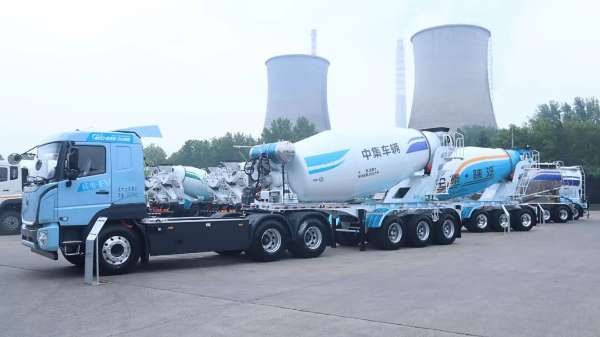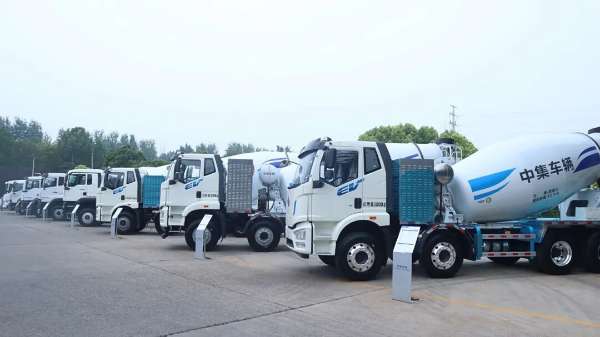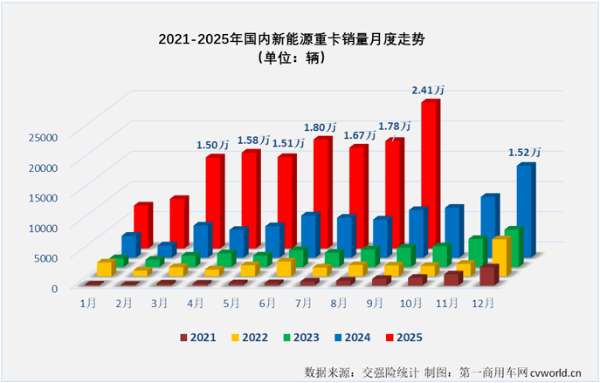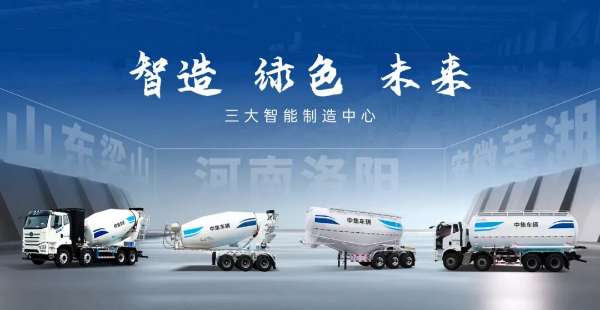On October 20th, the National Energy Administration released striking new data: By the end of September 2025, the total number of charging stations nationwide will exceed 18 million, including nearly 4.5 million public charging stations and over 13 million private charging stations.
This figure is significant not because there are "more charging stations," but because it symbolizes the infrastructure of the new energy transportation system, which possesses the capacity for self-circulation on an industrial scale.
Additionally, the preferential travel policies for new energy vehicles that have been implemented in various regions send a clear signal: "New energy is shifting from policy-driven to industry-driven."
The overlooked "second battlefield": The revolutionary value of heavy-duty trucks
The first wave of new energy vehicles was passenger cars—subsidies, hot-selling models, consumer upgrades, smart cockpits...it's a familiar story. However, it's not family cars that are truly transforming the energy structure and carbon emissions, but the heavy-duty vehicles that roam the roads every day.
Data shows that heavy-duty trucks account for only 8% of the vehicle population but contribute over 50% of road transport carbon emissions. This means that if new energy vehicles are to truly reshape the transportation system, they must conquer heavy-duty trucks.
Since 2024, sales of new energy heavy-duty trucks have continued to soar. High-frequency applications such as urban construction, port transportation, and short-haul logistics have become the primary battlefields for the initial implementation of new energy technologies.
The underlying logic is simple: controllable operations, plannable charging, and friendly traffic policies. These three key elements have transformed new energy heavy-duty trucks from a "concept" into "productive capacity." This is why sales of new energy heavy-duty trucks have increased by over 60% over the past two years, becoming the "second growth curve" of the new energy industry.
The next battle for new energy vehicles lies not in passenger cars, but in heavy-duty transportation.
Concrete transportation: the energy-intensive "last mile"
Among construction vehicles, concrete mixer trucks are unique—they frequently shuttle between mixing plants and construction sites daily, yet operate under conditions of high fuel consumption, heavy loads, and high attendance.
A traditional diesel mixer truck consumes nearly 30,000 liters of fuel annually and emits over 100 tons of carbon dioxide. For a fleet of 50 vehicles, fuel expenses often account for one-third of total operating costs. Furthermore, concrete mixer trucks operate in complex conditions: uphill, heavy loads, traffic jams, and frequent starts and stops—meaning every kilowatt-hour of energy consumption and every minute of malfunction translates directly into lost profits.

With the implementation of policies like "green construction" and "zero-carbon industrial parks," the niche for traditional concrete mixer trucks is shrinking—not being eliminated, but being forced to transform. A customer at a concrete mixer station in Chengdu stated that, for the same volume, the monthly operating costs of a new energy concrete mixer truck are only over 5,000 yuan, while traditional diesel trucks cost around 12,000 yuan. This significant cost difference is strongly driving customers toward new energy vehicles.
As new energy heavy-duty trucks enter the "short-haul, high-frequency" application landscape, concrete mixer trucks are naturally the next logical step. This is a policy necessity and a rational market response.
From "vehicle manufacturing" to "system manufacturing": The true challenge of new energy vehicles
The competition in new energy vehicles is no longer about who "runs the longest," but rather who "has the most stable system."
New energy concrete mixer trucks are no longer simply converted from gasoline to electricity; instead, they are integrated systems designed from the chassis, electric drive, and superstructure. Only forward-thinking research and development can ensure controllable energy consumption, predictable failure rates, and guaranteed residual value. CIMC Vehicles' concrete mixer trucks are built on chassis from leading domestic manufacturers such as Jiefang, Yutong, Shaanxi Automobile, Sinotruk, Dongfeng, Auman, and C&C Trucks. Customized superstructure manufacturing solutions are tailored to meet specific chassis requirements to achieve the optimal vehicle fit.

During concrete mixing operations, power consumption stems not only from the drive but also from the tank's rotation. CIMC Vehicles' concrete mixer trucks feature an optimized tank structure, employing high-strength, wear-resistant steel for a lightweight design. They are the first in the industry to utilize direct-drive technology using motors and reducers. This direct drive technology is more efficient, ensuring "every kilowatt-hour of electricity is used effectively," achieving a balance between optimized operation and energy efficiency.
In the new energy vehicle market, 70% of the competition lies in the vehicle itself and 30% in service. Those who can shorten spare parts response times and reduce downtime costs through remote diagnostics will earn the trust of fleet owners. CIMC Vehicles' mixer trucks are available in 31 provinces, municipalities, and autonomous regions nationwide and exported to over 50 countries and regions. We have over 200 authorized after-sales service stations, offering 24/7 service.
Twenty CIMC Vehicles EV DTB semi-trailer mixer trucks have been dispatched to South China, 30 CIMC Vehicles new energy mixer trucks have been shipped to Southwest China, and 40 CIMC Vehicles new energy mixer trucks have been successfully delivered to customers in Xiamen. The continued flow of orders is a testament to our product strength and a testament to our customers' trust.
From "green electricity grid access" to "zero-carbon industrial parks," from "new energy heavy trucks" to "new energy mixer trucks," this revolution is transforming every aspect of urban construction. New energy isn't just a passing fad; it's a path forward. CIMC Vehicles' mixer trucks are on this journey, leveraging manufacturing rationality and systemic expertise to ensure that new energy takes root.



